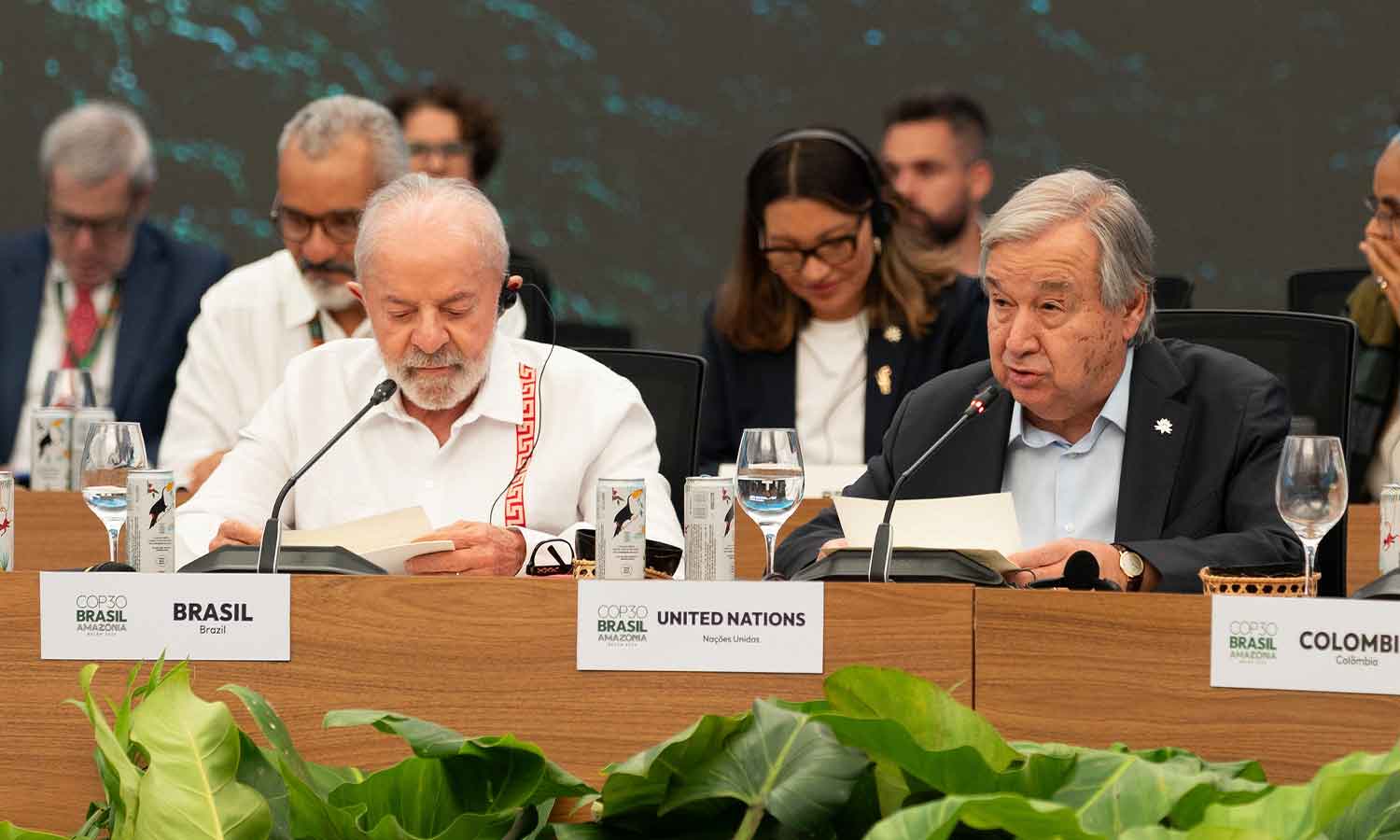City aligns climate plan with state – redlandscommunitynews.com

Report on the City of Redlands’ Climate Action Plan 2050 Update
On July 1, the Redlands City Council unanimously approved the “Climate Action Plan 2050,” an update to its environmental strategy. This report outlines the plan’s objectives, key measures, and the council’s deliberations, with a significant focus on its alignment with the United Nations Sustainable Development Goals (SDGs).
Alignment with State Mandates and Global Sustainability Goals
The updated plan is designed to align the City of Redlands with new statewide environmental targets and demonstrates a commitment to global sustainability frameworks. The primary drivers for this update include:
- Assembly Bill 1279: Mandates statewide carbon neutrality by 2045, a core component of SDG 13 (Climate Action).
- Senate Bill 100: Requires all retail electricity sales to be sourced from renewable and zero-carbon energy by 2045, directly supporting SDG 7 (Affordable and Clean Energy).
The plan’s two main objectives are to monitor progress towards 2030 and 2035 targets and to incorporate the latest climate science and state guidance. This proactive approach is fundamental to achieving SDG 11 (Sustainable Cities and Communities).
GHG Reduction Targets and Strategic Measures
According to a review by the Redlands Planning Commission, the city must reduce greenhouse gas (GHG) emissions by over 300,000 metric tons of carbon dioxide equivalent (MTCO2e) by 2050 to achieve its carbon neutrality goals. The plan outlines several quantified and supportive measures to bridge this gap.
Key Action Areas for Sustainable Development
-
Transportation Sector Overhaul
Recognized as the largest source of emissions in Redlands, the transportation sector is a primary focus. Key actions contribute to SDG 11 and SDG 9 (Industry, Innovation, and Infrastructure).
- Electric Vehicle (EV) Infrastructure: The plan sets ambitious targets for increasing the number of EV chargers citywide to 760 by 2030 and 3,300 by 2050.
- Logistics Industry Emissions: Councilwoman Denise Davis highlighted the need to address emissions from logistics trucks, which contribute to poor air quality, impacting SDG 3 (Good Health and Well-being).
-
Industrial and Commercial Equipment Regulations
A critical measure involves limiting the idling of construction, industrial, and commercial off-road equipment. This single action is projected to reduce emissions by over 260,000 MTCO2e by 2050, significantly advancing progress on SDG 13 (Climate Action).
-
Promotion of Clean Energy
In line with SDG 7 (Affordable and Clean Energy), the plan promotes the development of a shared solar generation system, encouraging community-wide participation in the transition to renewable energy.
-
Partnerships and Education
The plan emphasizes collaboration with local organizations, expansion of sustainability programs, and increased environmental education, reflecting the principles of SDG 17 (Partnerships for the Goals).
Council Deliberations: Aspirations and Practical Concerns
While the council expressed broad support for the plan’s direction, several members raised concerns regarding its implementation and feasibility.
- Infrastructure and Financial Feasibility: Mayor Pro Tem Marc Shaw and Councilman Eddie Tejeda described the plan as “aspirational,” noting the significant gap between state-mandated targets and the provision of state funding. Concerns were raised about the capacity of the current electrical grid to support the proposed expansion of EV chargers.
- Public Adoption of EVs: Shaw cited a city survey indicating that 54% of residents are unlikely to purchase an EV, posing a challenge to meeting charger installation goals, which depend on consumer demand.
- Policy as a Tool: Councilman Tejeda suggested using internal policies, such as waiving permit fees for home charger installations, to incentivize public participation and help meet the targets.
Path Forward: An Adaptive and Collaborative Approach
City officials acknowledged the ambitious nature of the goals. Development Services Director Brian Desatnik noted that the plan assumes the state’s 2035 ban on new internal combustion engine vehicle sales will proceed, which will be a major driver of EV adoption. Assistant City Manager Chris Boatman emphasized that city-led projects, such as designing an elaborate solar system for the new police station, are important but insufficient on their own. He stressed that achieving the 2050 goals will require large-scale transitions and that the plan must remain adaptable over the next 25 years.
The “Climate Action Plan 2050” serves as a strategic roadmap for Redlands to contribute to state and global climate objectives. Its success will depend on a combination of municipal action, private sector innovation, public adoption, and the ability to adapt to evolving technologies and policies, embodying the integrated nature of the Sustainable Development Goals.
Analysis of Sustainable Development Goals in the Article
1. Which SDGs are addressed or connected to the issues highlighted in the article?
The article on the City of Redlands’ “Climate Action Plan 2050” directly addresses or connects to several Sustainable Development Goals (SDGs). The primary focus is on environmental sustainability, urban development, and energy transition.
- SDG 13: Climate Action: This is the most central SDG. The entire article revolves around the city’s “Climate Action Plan” which is designed to “lower greenhouse gas (GHG) emissions” and achieve “carbon neutrality by 2045.” This directly aligns with the goal of taking urgent action to combat climate change and its impacts.
- SDG 11: Sustainable Cities and Communities: The plan is a city-level initiative focused on making Redlands more sustainable. It addresses key urban issues mentioned in the article, such as reducing air pollution from transportation (“trucks contribute to us having some of the worst air quality”), managing urban infrastructure like “electric vehicle (EV) chargers,” and integrating climate goals into urban planning (“2035 General Plan”).
- SDG 7: Affordable and Clean Energy: The article highlights the city’s alignment with state goals for clean energy. It specifically mentions Senate Bill 100, which requires utilities “to make all retail electricity sales to be from renewable and zero-carbon energy by 2045,” and the plan’s promotion of a “shared solar generation system.”
- SDG 3: Good Health and Well-being: The article connects environmental issues to public health. Councilwoman Denise Davis notes that pollution from trucks contributes to Redlands having “some of the worst air quality in the nation.” Reducing emissions, a key goal of the plan, would directly address this health risk, which is related to reducing illnesses from air pollution.
- SDG 17: Partnerships for the Goals: The development and implementation of the climate plan involve multiple stakeholders. The article mentions the city’s collaboration with “Dyett & Bhatia (an Oakland-based Urban planning department firm),” the plan to work with “local organizations,” and the alignment of city goals with “statewide targets,” demonstrating a multi-stakeholder partnership approach.
2. What specific targets under those SDGs can be identified based on the article’s content?
Based on the actions and goals described in the article, several specific SDG targets can be identified:
- Target 13.2: Integrate climate change measures into national policies, strategies and planning.
- Explanation: The article is a clear example of this target being implemented at a local level. The City of Redlands is formally adopting the “Climate Action Plan 2050” and amending its “2035 General Plan” to integrate GHG reduction goals and climate science into its official city planning and regulations.
- Target 11.6: By 2030, reduce the adverse per capita environmental impact of cities, including by paying special attention to air quality.
- Explanation: The plan’s primary objective is to “lower greenhouse gas (GHG) emissions.” Furthermore, the article explicitly mentions concerns about having “some of the worst air quality in the nation” due to logistics industry trucks, and the plan aims to mitigate this pollution.
- Target 11.2: By 2030, provide access to safe, affordable, accessible and sustainable transport systems for all.
- Explanation: A key component of the climate plan is addressing the transportation sector. The article details specific goals to “increase the number of electric vehicle (EV) chargers” and discusses the state-mandated transition away from “internal combustion engine” vehicles, which are central to creating a sustainable transport system.
- Target 7.2: By 2030, increase substantially the share of renewable energy in the global energy mix.
- Explanation: The plan aligns with state mandates (Senate Bill 100) for “all retail electricity sales to be from renewable and zero-carbon energy by 2045.” The article also states that the plan “promotes developing a shared solar generation system in the city,” directly contributing to increasing the share of renewable energy.
- Target 13.3: Improve education, awareness-raising and human and institutional capacity on climate change mitigation.
- Explanation: The article states that the “updated climate action plan includes quantified and supportive measures, which include… increased environmental education.” This shows a clear intent to build local capacity and awareness for climate action.
3. Are there any indicators mentioned or implied in the article that can be used to measure progress towards the identified targets?
Yes, the article mentions several specific and quantifiable indicators that can be used to track progress.
- Total greenhouse gas emissions: The article provides precise figures for measuring GHG reduction. It mentions a target of “one metric ton of carbon dioxide equivalent (MTCO2e) for 2050” and a required reduction of “over 300,000 MTCO2e reductions by 2050.” This is a direct indicator for Target 11.6 and 13.2.
- Carbon neutrality timeline: The plan’s alignment with the state goal of achieving “carbon neutrality by 2045” serves as a high-level indicator of progress.
- Number of electric vehicle chargers: The plan includes very specific, measurable targets for EV infrastructure. The article states the goal is “760 EV chargers citywide by 2030, and 3300 chargers by 2050,” which is a clear indicator for Target 11.2.
- Renewable energy in electricity sales: The goal for Southern California Edison to “make all retail electricity sales to be from renewable and zero-carbon energy by 2045” is a key indicator for Target 7.2.
- Adoption of climate action plans: The primary event of the article, the Redlands City Council’s unanimous approval of the “Climate Action Plan 2050,” is itself an indicator of progress for Target 13.2 (integrating climate measures into local planning).
- Specific emission reduction policies: The plan to “limit idling of construction, industrial and commercial off-road equipment” is a specific policy action that serves as an indicator. Its projected impact is even quantified as leading to “reductions of over 260,000 MTCO2e by 2050.”
4. Table of SDGs, Targets, and Indicators
| SDGs | Targets | Indicators Identified in the Article |
|---|---|---|
| SDG 13: Climate Action | 13.2: Integrate climate change measures into policies, strategies and planning. |
|
| SDG 11: Sustainable Cities and Communities |
11.6: Reduce the adverse per capita environmental impact of cities, paying special attention to air quality.
11.2: Provide access to sustainable transport systems. |
|
| SDG 7: Affordable and Clean Energy | 7.2: Increase substantially the share of renewable energy in the energy mix. |
|
| SDG 3: Good Health and Well-being | 3.9: Substantially reduce the number of deaths and illnesses from air pollution. |
|
| SDG 17: Partnerships for the Goals | 17.17: Encourage and promote effective public, public-private and civil society partnerships. |
|
Source: redlandscommunitynews.com

What is Your Reaction?
 Like
0
Like
0
 Dislike
0
Dislike
0
 Love
0
Love
0
 Funny
0
Funny
0
 Angry
0
Angry
0
 Sad
0
Sad
0
 Wow
0
Wow
0












































































